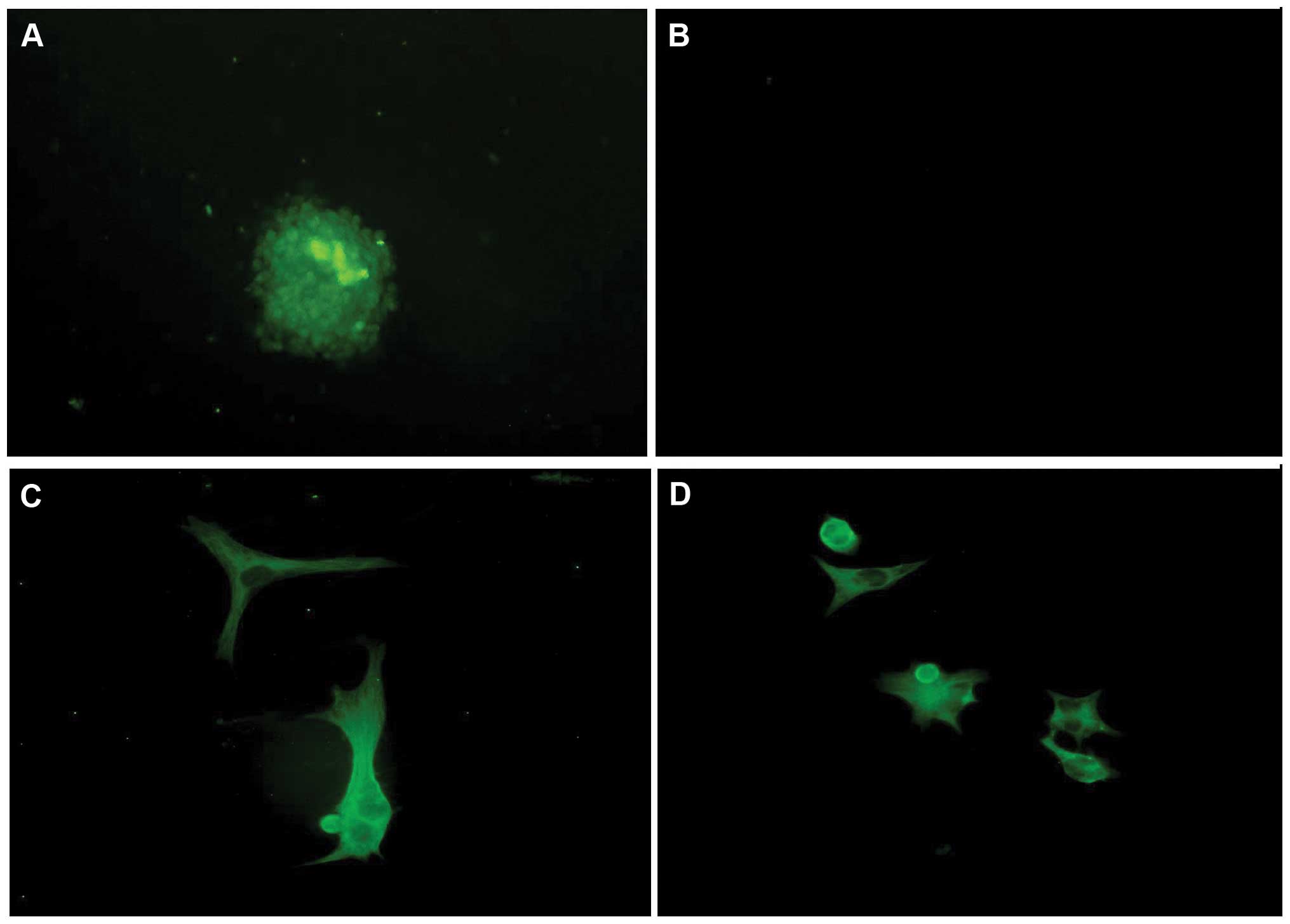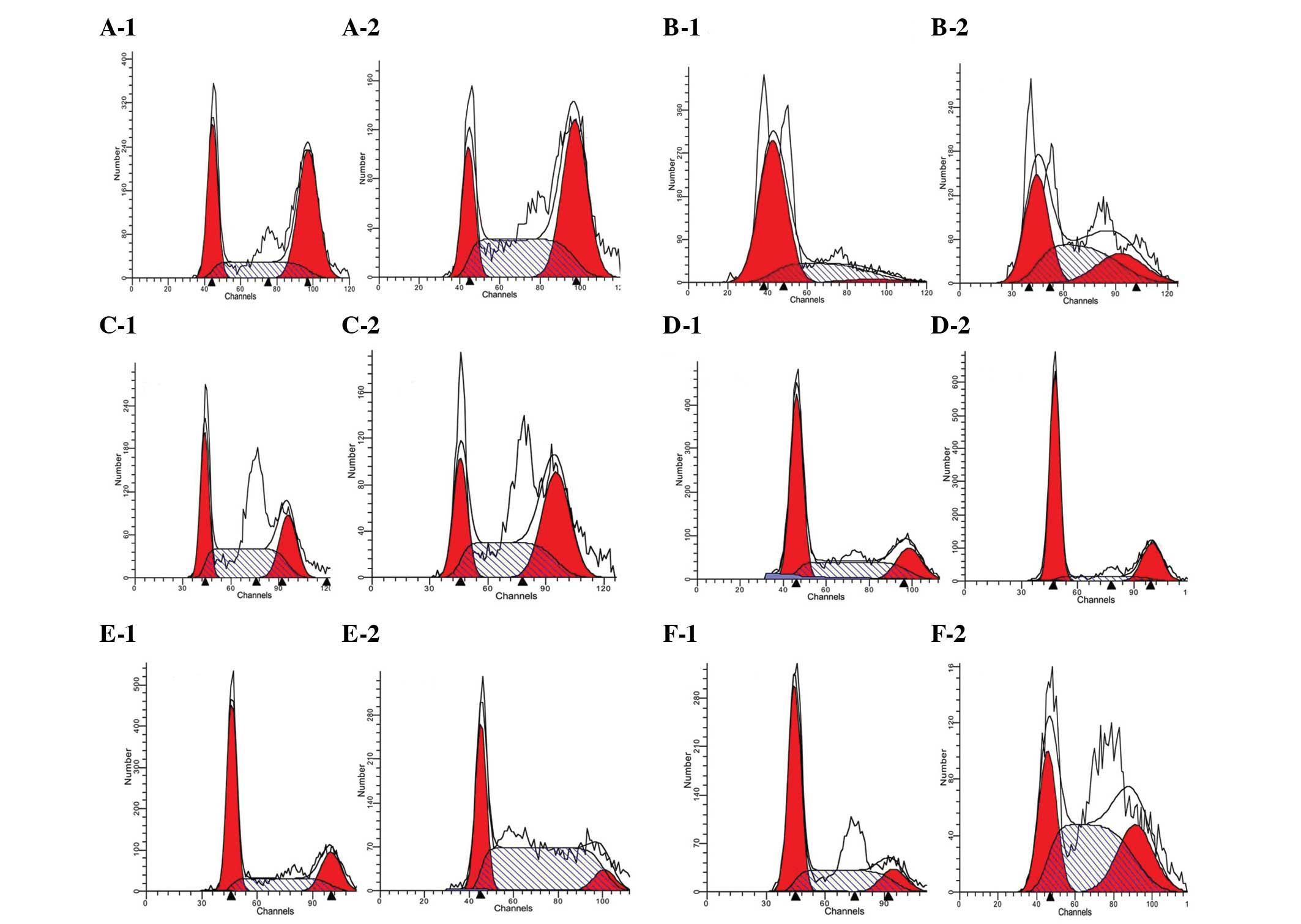Effect of temozolomide on livin and caspase-3 in U251 glioma stem cells
- Authors:
- Published online on: December 18, 2014 https://doi.org/10.3892/etm.2014.2144
- Pages: 744-750
-
Copyright: © Li et al. This is an open access article distributed under the terms of Creative Commons Attribution License.
Metrics:
Total
Views: 0 (Spandidos Publications: | PMC Statistics:
)
Total PDF Downloads: 0 (Spandidos Publications: | PMC Statistics:
)
Abstract
The aim of the present study was to analyze the effect of temozolomide (TMZ) on the antiapoptotic gene livin and the associated gene caspase-3. Cancer stem cells were isolated from U251 glioblastoma cells using immunomagnetic beads. The glioma cells and glioma stem cells were transfected with livin or small hairpin RNA (shRNA) against livin using lentiviral vectors. Quantitative PCR, flow cytometry and a Cell Counting kit‑8 assay were used to detect the expression of livin and caspase-3, analyze the cell cycle and investigate cell proliferation, respectively, following treatment with various concentrations of TMZ (0, 25, 50, 100, 200 and 400 µmol/l) for different periods of time (24, 48 and 72 h). The expression levels of livin and caspase‑3 in the U251 stem cells were significantly higher than those in the U251 cells (P<0.01). At the same intervention time, the expression levels of livin decreased and those of caspase-3 increased as the concentration of TMZ increased (P<0.05). The expression levels of livin and caspase-3 in the U251 cells were lower than those in the U251 stem cells with the same intervention time and concentration of TMZ (P<0.05). The cell cycle was arrested in the G2/M phase in the U251 cells following TMZ intervention; the proportion of cells in the G2/M phase increased as the concentration of TMZ increased (P<0.05). The U251 stem cells were arrested in the S phase following treatment with TMZ; the proportion of cells in the S phase increased as the concentration of TMZ increased (P<0.05). In conclusion, the expression levels of livin and caspase-3 were effectively inhibited and increased, respectively, in all cell models following treatment with TMZ. TMZ is able to arrest the cell cycle and enhance cell apoptosis. U251 stem cells are less vulnerable than U251 cells to TMZ.













